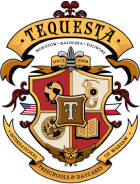Rhythmic activities in preschool are not merely a cheerful way for children to spend time with music; more importantly, they provide an excellent method for fostering the all-around development of a young child. At TEQUESTA, we have long observed how rhythmics positively influences both the physical and the social-emotional spheres of our students, while also serving as robust support in the educational process. Through these activities, the youngest learners can explore the world of sound and movement in a safe, nurturing environment.
From the very first rhythmic lessons, young children learn to respond to a variety of auditory stimuli. Discovering different melodies, tempos, or volumes stimulates their imagination and nurtures their musical sensitivity. When children jump, clap, or march to a particular tune, they are not only practicing coordination but also beginning to understand concepts such as pulse (the steady beat accompanying music) and accent (a stronger beat in a measure). Everything takes place in an atmosphere of play, encouraging them to take on new challenges and making learning come naturally.
Rhythmic activities also offer an excellent tool for developing memory and concentration. By attempting to replicate dance routines or various clapping and stomping sequences, children must remember each successive element and maintain focused attention for extended periods. This is extremely valuable preparation for future education—particularly once they start encountering more complex tasks that demand concentration. At TEQUESTA, our teachers weave a variety of exercises into these lessons, which pleasantly foster the ability to remember and process information.
A major advantage of group rhythmics is how it supports social skills. Children who form a “musical” or “dance” group together learn to make and maintain eye contact, follow the instructor’s lead, listen to directions, and observe their classmates. The result is a greater understanding of how cooperation and collaboration work: the little ones gradually discover that the success of the entire group depends equally on each individual’s engagement. This sense of unity and mutual support not only builds confidence but also encourages teamwork in future projects.
Rhythmic classes additionally bring emotional benefits. As a universal language, music can capture a range of moods: joy, calm, excitement, or even reflection. When children move in sync with these different pieces, they learn to express their own emotions through movement—whether it’s energetic dancing, gentle swaying, or fun gestures that reflect the mood of the melody. This type of activity offers them not just a physical workout but also a form of creative expression that sparks their imaginations and fosters self-discovery.
Another key aspect is physical development. The movements performed to music strengthen muscles, improve whole-body coordination, and enhance balance. Regular practice of this kind, starting at the youngest ages, contributes to more efficient body mechanics. At TEQUESTA, we always make sure to tailor exercises to the children’s ages and abilities, ensuring rhythmics supports harmonious physical growth without overstressing their bodies.
It’s also worth noting the language benefits. During our rhythmic sessions, we often introduce songs in English, allowing children to naturally familiarize themselves with new words, phrases, and expressions. Because TEQUESTA preschoolers use a foreign language daily, they can easily reinforce these language skills through shared play. Music further enhances memory—associating specific phrases with a familiar rhythmic pattern proves a remarkably effective way to learn new vocabulary.
Another important element of rhythmic activities is developing an awareness of one’s own body and spatial surroundings. Children learn how to move safely among others, maintaining appropriate distance and paying attention to tempo or direction. This is a valuable lesson that leads to increased confidence in interacting with peers as well as an understanding that everyone has their own place in the group. A climate of mutual respect and joy means even the more reserved little ones gradually become open to new activities.
Finally, it’s essential to highlight that rhythmic classes in preschool also offer an excellent outlet for kids’ energy. Children, by nature, are active and brimming with ideas, and dance-and-music sessions let them channel that energy constructively. When they have the opportunity to dance out their emotions or clap along to a favorite song, they settle down more readily and transition smoothly to other daily activities.
At TEQUESTA, rhythmics is an integral part of our educational program, enabling children to develop in multiple ways—from cultivating their musical ear and motor coordination to learning cooperation and building positive relationships. We are delighted by every bit of progress and every smile on the children’s faces when they discover new skills within themselves. Rhythmic activities are not merely about dance and song—they are, above all, a fascinating journey into the world of music, movement, and joyful creative exploration.


